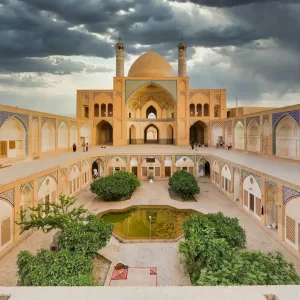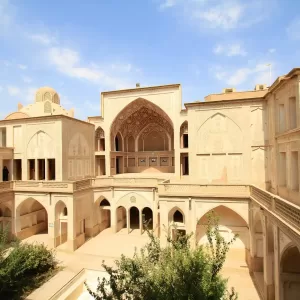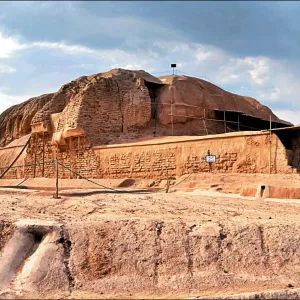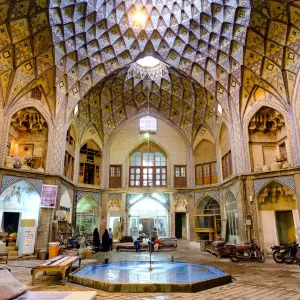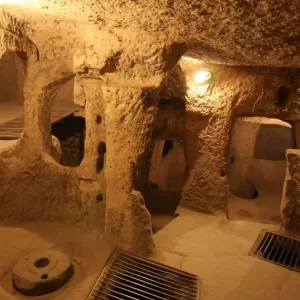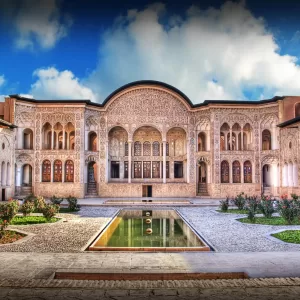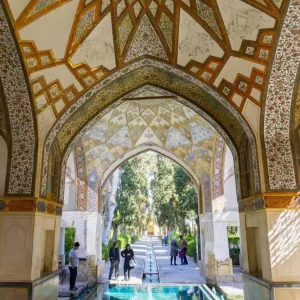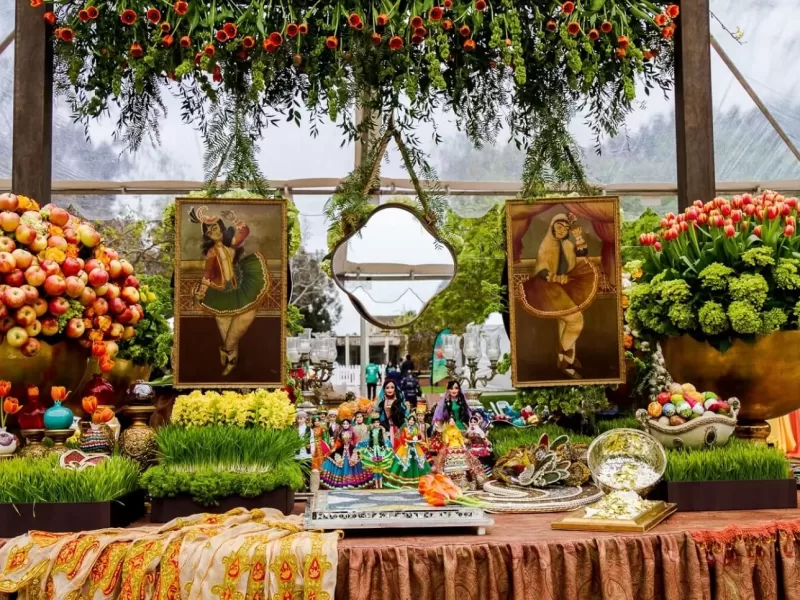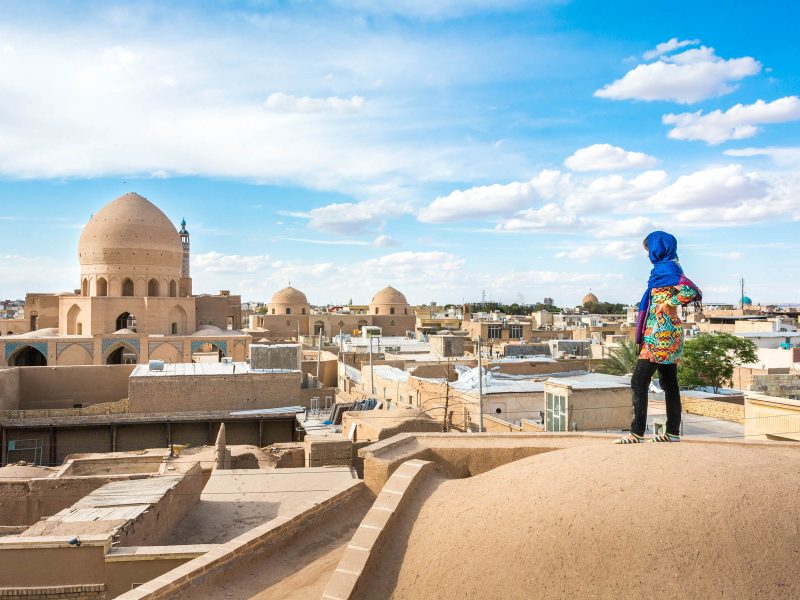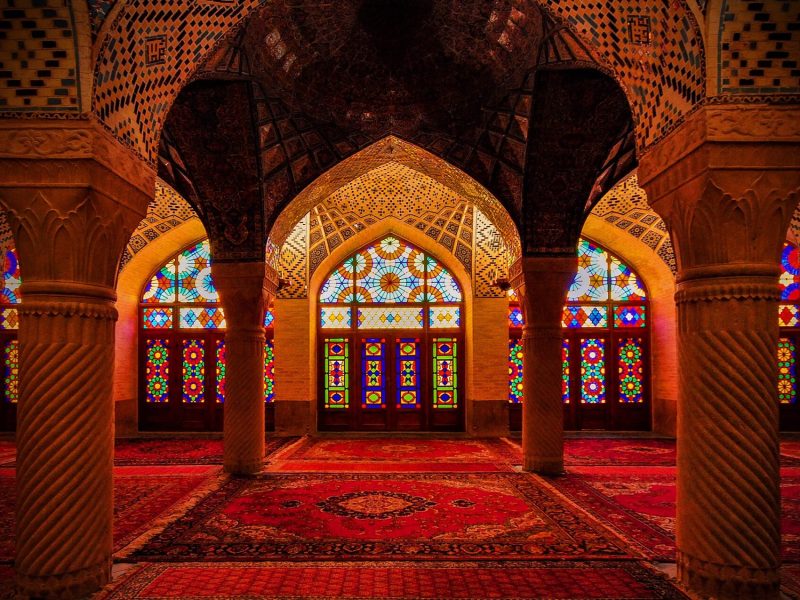Tabatabaei Historical House: A Masterpiece of Qajar Era Architecture in Kashan
Tabatabaei Historical House is one of the most magnificent examples of Qajar era architecture in Iran. It is a stunning two-story building located in the heart of the historic city of Kashan, and is a must-visit for anyone interested in Iranian history and architecture.
7 Brief Facts about Tabatabaei Historical House in Kashan
- The house is located in the historic city of Kashan, Iran
- It was built in the late 19th century by a wealthy merchant
- The house showcases traditional Persian architecture and design
- The house features a central courtyard surrounded by rooms and halls
- The walls are adorned with intricate tile work, frescoes and paintings
- The house also features a traditional Iranian bathhouse (hammam)
- It is considered as one of the most beautiful historical houses in Iran.
History
The Tabatabaei Historical House was built in the late 19th century and is considered one of the finest examples of Qajar architecture in Iran. It was originally constructed as a residence for the wealthy Tabatabaei family and has been meticulously restored to its former glory, making it a top tourist attraction in Kashan.
Architecture
The Tabatabaei Historical House is a prime example of the traditional Iranian architectural style, with its intricate tile work, beautiful entrance arches, and spacious courtyards. The building is made up of multiple interconnected rooms, each of which is adorned with stunning, hand-painted frescoes and intricate geometric designs. The use of colored glass, mirrors, and colorful tiles also adds to the beauty and elegance of the house.
Interior Design
The interior of the Tabatabaei Historical House is just as stunning as its exterior. The rooms are spacious and airy, with high ceilings and large windows, which let in plenty of light. The walls are decorated with intricate frescoes and paintings, depicting scenes from Iranian mythology and history. The furniture is also original, made from beautiful woods and ornately carved, adding to the overall elegance of the house.
Significance
The Tabatabaei Historical House is significant not just for its beauty, but also for its historical value. It provides a glimpse into the life of the wealthy Qajar era families, and the intricate details of the architecture and design reflect the richness and sophistication of that era.
Best Time to Visit
The best time to visit the Tabatabaei Historical House is in the spring or autumn, when the weather is mild and comfortable. The house is open to visitors every day except for national holidays, and it is recommended to book a guided tour in advance to get the most out of your visit.
Tabatabaei Historical House is a must-visit attraction for those who want to explore the rich cultural heritage and traditional architecture of Iran. With its intricate tile work, frescoes, and paintings, the house offers a glimpse into the lifestyle of wealthy merchants during the late 19th century in Iran. The house is considered as one of the most beautiful historical houses in Iran, and is definitely worth a visit.
FAQs
- Where is Tabatabaei Historical House located?
The house is located in the city of Kashan, Iran. - Who built the house?
The house was built in the late 19th century by a wealthy merchant. - What type of architecture is featured in the house?
The house showcases traditional Persian architecture and design. - What is the highlight of the house?
The highlight of the house is its central courtyard surrounded by rooms and halls, and the intricate tile work, frescoes, and paintings on its walls. - Does the house have a traditional bathhouse?
Yes, the house features a traditional Iranian bathhouse (hammam). - What makes Tabatabaei Historical House unique?
The house is considered as one of the most beautiful historical houses in Iran, and showcases the traditional Persian architecture and design. - Can tourists visit Tabatabaei Historical House?
Yes, tourists can visit Tabatabaei Historical House. - Is there an entrance fee to visit the house?
Yes, there is an entrance fee to visit the house.

